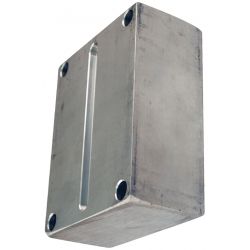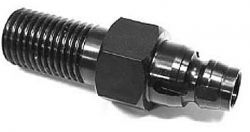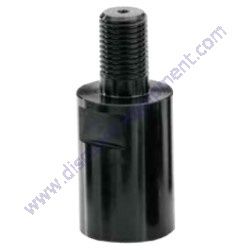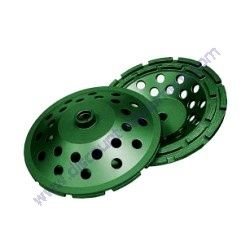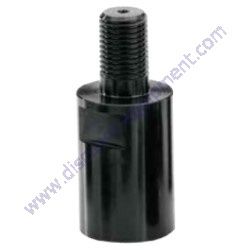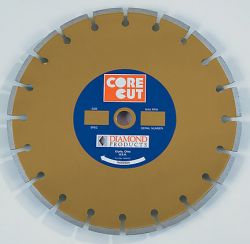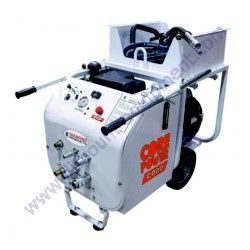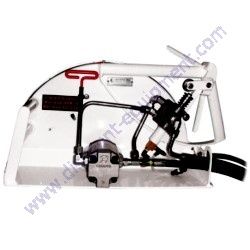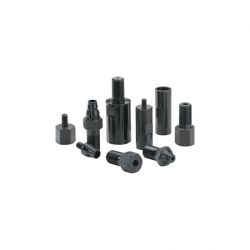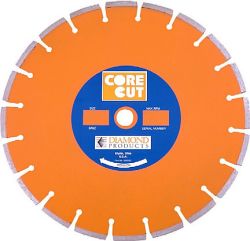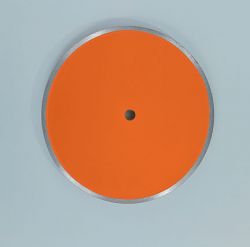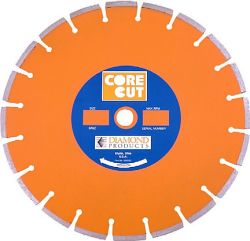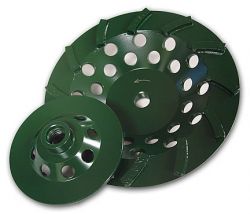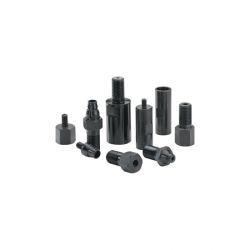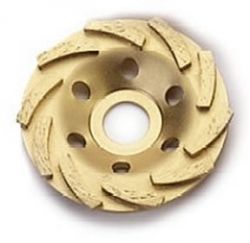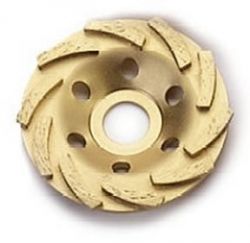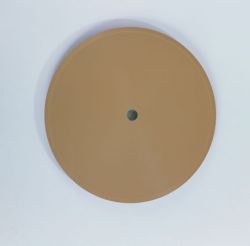Diamond Products 5800578A Saw, Walk Behind W/14" Guard, Electric 5HP-230V-3PH Baldor CC1305E3XL-14 c/n 99977
Safety Information
Diamond Products CC1305E3-XL (5HP Baldor 3 PH Engine) (Electric and Hydraulic) Small Compact Walk Behind Concrete Saw
Safety Precautions
Operate the CC1200 Concrete Saw and the CC1300XL Concrete Saw and all of their
components according to this manual. Failure to comply with and understand the following safety, operations, and maintenance instructions can result in serious injuries and/or death. All operators must be properly trained or supervised prior to using these saws and should understand the risks and hazards involved. Improper or unintended saw usage is discouraged and Diamond Products cannot be held liable for any damages.
All saw modifications should be made by Diamond Products to ensure proper safety and accuracy.
Modifications made to these saws by the owner are not the responsibility of Diamond Products and void all saw warranties if a problem arises from the
modification.
Refer to the Diamond Products’ Parts List for additional information and part diagrams. Refer to the engine/motor manual and manufacturer as the primary source for all safety, operations, and maintenance instructions for the engine/motor.
Prior to operating the saw, record the saw’s serial number, and the engine’s model and serial numbers in the Serial Tags section in the Index.
The information in this manual may be updated at
any time.
Safety Alerts
DANGER
Serious injuries and/or death will occur if these instructions are not followed.
WARNING
Serious injuries and/or death could occur if these instructions are not followed.
CAUTION
Mild and/or moderate injuries could occur if these instructions are not followed.
Proposition 65
WARNING
Engine exhaust and some of its constituents are known to the State of California to cause cancer, birth defects, and/or other reproductive harm.
Spark Arrester Requirement
WARNING
In the State of California it is a violation of Section 4442 or 4443 to use or operate the engine on any forest-covered, brush-covered, or grass-covered land unless the engine is equipped with a spark arrester, as defined in Section 4442, maintained in effective, working order or the engine is constructed, equipped,
and maintained for the prevention of fire pursuant to Section 4443.
Respiratory Hazards
WARNING
Concrete cutting produces dust and fumes known to cause illness, death, cancer,
respiratory disease, birth defects, and/or other reproductive harm. Safety protection techniques include, but are not limited to:
• Wearing gloves.
• Wearing safety goggles or a face shield.
• Using approved respirators.
• Washing work clothes daily.
• Using water when wet cutting to minimize dust.
• Washing the hands and face prior to eating/drinking.
For additional safety and self-protection information contact your employer, the
Occupational Safety and Health Administration (OSHA), and/or The National Institute for Occupational Safety and Health
General Safety
• Read and understand all of the safety, operations, and maintenance instructions in this manual prior to operating or performing maintenance on the saw.
• Clean slurry, concrete dust, and debris from the saw daily/regularly.
• Raise the saw to a proper height for easy access when working underneath the saw, and place jack stands or blocks under the frame edges at the front and back of the frame.
• Repair the saw immediately if a problem arises.
• Replace saw decals when they become unreadable.
• Dispose of all hazardous waste materials properly and according to city, state, and federal regulations.
• Always have a phone available, and identify the location of the nearest fire extinguisher and first aid kit prior to operating the saw.
• Persons under the statutory age limit should not operate the saw.
• Let the saw cool down after operating it to prevent serious burns.
• Properly chock the tires when parking the saw on a slope to prevent unnecessary movement.
• All non-routine maintenance tasks should be performed by an authorized service center.
DO NOT:
• Operate the saw without using the appropriate safety equipment required for the work task.
• Operate or maintenance the saw with clothing, hair, or accessories that can snag in the machinery.
• Operate the saw wearing flammable clothing.
• Operate the saw using attachments not associated with or recommended for the saw.
• Operate the saw with anyone near the work area.
• Operate the saw until all unnecessary materials have been removed from the work area.
• Operate the saw with loose nuts and bolts.
DO NOT (cont.):
• Operate the saw when feeling ill or fatigued
• Operate the saw under the influence of drugs and/or alcohol.
• Operate the saw on extremely steep slopes.
• Operate the saw with guards and access panels removed.
• Grease/lubricate the saw with the engine/motor running unless stated otherwise.
• Perform maintenance until the saw cools down.
• Perform maintenance with the engine/motor running unless stated otherwise.
Blade Safety
• Always use reinforced abrasive blades or steel centered diamond blades.
• Inspect all blades prior to using and discard damaged blades.
• DO NOT install a blade with the engine/motor running.
• DO NOT expose yourself or anyone else to the direct line of the blade when operating the saw.
• Keep all body parts away from rotating blades.
• Inspect the blade flanges for damages, wear, and cleanliness. Clean, repair, or replace damaged components immediately.
• Always use an appropriate size blade for the cutting task. The blade must fit snug on the blade shaft.
• The outer flange must fit snug on the blade shaft, through the blade, and into the inner flange alignment pinhole.
• Wear gloves and be alert to the surrounding environment when handling blades.
• DO NOT drop the blade.
• Always point the arrow printed on the blade in the direction of the blade shaft’s rotation when installing the blade.
• Always use the correct blade type for the material being cut.
• DO NOT exceed the blade’s maximum recommended speed when cutting. Excessive
blade speeds can cause blade breakage, resulting in serious injuries and/or death.
• DO NOT use damaged blades when cutting to avoid harming yourself, others, or the saw.
• DO NOT use a blade for cutting that is rated with a lower maximum operating speed than the blade shaft speed.
• Tighten the blade shaft nut/screw to 50 foot pounds (ft-lb) (67.8 Newton-meters (Nm)) to properly secure the outer flange and blade.
Failure to properly secure the outer flange and blade may cause parts to loosen or fall off of the saw when operating it.
• Raise the blade when maneuvering the saw to provide proper clearance between the blade and the ground.
• Let the blade cool prior to removing or replacing blades when dry cutting.
Blade Guard Safety
• DO NOT operate the saw with the blade guard raised or removed.
• Blade exposure should not exceed 180° when cutting.
• Always pivot the front of the blade guard 180° (fully upward) so the
guard does not swing back unexpectedly, which may cause serious injuries.
• DO NOT remove the blade guard with the engine/motor running.
• Always use a blade guard that corresponds with the blade size.
• Inspect the blade guard and its water tubes prior to starting the saw. Clean, repair, or replace damaged components immediately.
Fuel Safety
• Store fuel in an appropriate safety container.
• DO NOT operate the saw with a fuel leak.
• DO NOT fuel the saw with the engine running.
• Let the engine cool prior to adding fuel.
• DO NOT smoke or expose fuel to open flames when filling the fuel tank or working with fuel.
• Refer to the engine manual for recommended fuels.
• Clean up spilled fuel prior to starting the engine.
• Fuel may seep out from the fuel cap vent (applicable models) when the saw is raised.
• Move the saw away from the fueling area prior to starting the engine.
• Drain the fuel tank and fuel lines for longer storage periods. Refer to the engine manual for additional information.
Engine/Motor Safety
• Refer to the engine/motor manual as the primary source for engine/motor safety and general care practices.
• Occasionally measure the engine speed and adjust the engine governor, as necessary, to the factory setting for proper saw and blade efficiency.
• Always know how to turn off the engine/motor for emergency purposes.
• Fill the fuel tank and check the oil level prior to starting the engine.
• DO NOT leave the engine/motor running unattended.
• Keep all body parts away from rotating saw parts with the engine/motor running.
• DO NOT start the engine without the air filter(s) installed.
• DO NOT allow dust to enter the air intake tube when cleaning/replacing the air filter(s) to prevent serious engine damage.
• Immediately replace damaged saw components that may allow dust to enter the engine.
• Always operate the saw in well ventilated areas. Concentrated engine exhaust can cause loss of consciousness and/or death.
• DO NOT operate the saw around combustible materials or fumes to prevent fires/explosions
• DO NOT leave the saw unattended until the engine/motor is off and the blade has stopped spinning.
• Wipe down the engine/motor exterior and guards daily or regularly to prevent high operating temperatures. DO NOT spray the engine/motor with water to prevent engine damage.
• DO NOT touch the engine/muffler assembly with the engine running, and always let the parts cool down after operating the saw to prevent serious burns.
• Let the engine/motor cool prior to performing maintenance.
• Handle hot oil carefully when changing the engine oil.
• DO NOT perform maintenance with the engine/motor running unless stated otherwise.
• For water cooled engines, let the engine cool prior to removing pressurized caps.
• Disconnect the electric motor saw from the power source prior to touching electrical connections.
• Disconnect the electric motor saw from the power source prior to performing maintenance.
• All electric motor saws should be properly grounded prior to operating.
• DO NOT supply less or more power to the electric motor than what the motor is rated for.
Cutting Safety
• The work area should not contain buried or embedded electrical, gas, or water lines.
• Turn off all electricity, gas, and water around the work area prior to cutting.
• When using an electric motor saw, be aware of all electrical lines around the work area when power is necessary.
• DO NOT expose yourself or anyone else to the direct line of the blade when cutting.
• DO NOT allow any person, animal, or object in and around the work area when cutting.
• Use just enough handle pressure to guide the saw on the cutting line. DO NOT forcibly direct (twist) the saw from side-to-side to avoid damaging the saw and blade.
• Avoid sawing excessively deep to preserve the blade and reduce sawing costs.
Belt Safety
• Turn off the engine/motor prior to performing belt maintenance.
• Let the belts cool down prior to performing belt maintenance.
• Regularly inspect the belts for fraying, stress cracks, and/or breakage and replace immediately if there are damages.
• Over-tensioning the belts may damage the engine crankshaft. Under-tensioning the belts may cause shorter belt life and/or poor saw performance.
• Squealing belts indicate looseness.
• Make sure the belts are properly aligned prior to operating the saw.
• Always replace the belt guard prior to operating the saw.
Transporting Safety
• Remove the blade prior to transporting the saw.
• Move the fuel shutoff lever to the closed or off position to prevent fuel leaks when transporting the saw.
• Drain the fuel tank when transporting the saw long distances.
• Use heavy-duty ramps that will properly support the weight of the saw and yourself when loading/unloading.
• The towing truck/trailer should be in good, working condition.
• Raise the saw to avoid damaging saw components while moving up and down ramps.
• Use extreme caution when guiding the saw up and down ramps. Slowly push the saw forward to guide it down the ramp. Slowly pull the saw backward to guide it up the ramp.
• Turn off the engine/motor once the saw is loaded into the truck/trailer.
• Properly block and chain the saw in the truck/trailer prior to transporting.
• Refer to the Department of Transportation (DOT) for additional information regarding proper transportation techniques and truck/trailer requirements.
Lifting Safety
• Move yourself and all others away from the lifting area when hoisting the saw to prevent being crushed underneath the saw.
• Secure the appropriate hoisting cables, straps, ropes, wires, and/or chains to the lift points on the frame to properly lift the saw when hoisting.
• DO NOT attempt to lift the saw irresponsibly and/or improperly. |

